Violence escalates between Hindus and Muslims in India
Binsar Bakkara / AP for The DePaulia
A Muslim man holds up a poster during a rally outside the Indian Consulate General in Medan, North Sumatra, Indonesian Monday, March 2, 2020.
Tensions rise in India amidst the ongoing violence between the Hindus and Muslims of New Delhi in what is becoming yet another global cry for humanity and justice.
On Feb. 24, a photograph of a man in a fetal position with bloodstained clothes began to circulate around social media. The Muslim man, Mohammed Zubair, 37, was surrounded by a mob of men holding bloodied sticks as they advanced towards a vulnerable and visibly wounded Zubair, landing blow after blow to the point where Zubair thought that he would die.
“They saw I was alone, they saw my cap, beard, shalwar kameez [clothes] and saw me as a Muslim,” Zubair said in a Reuters article. “They just started attacking, shouting slogans. What kind of humanity is this?”
Zubair is one of the dozens of Muslims faced with the blows of violence in the uprising between the Hindus and Muslims, and was one of the few that made it out alive. Approximately 38 people have died since the clash began on Feb. 24, and according to a Reuters report, the event of a mob screaming pro-Hindu slogans while attacking an unarmed man because he was Muslim further displays that this existing conflict may be hard to contain.
“The conflict itself is not between ‘Hindus’ and ‘Muslims’ – neither of these are monolithic groups in India,” Kalyani Menon, a religious anthropologist at DePaul University said. “The rise to dominance of the Hindu Right on the sociopolitical landscape of India is directly connected to the increasing violence against the minorities in the country. Muslims in particular, but also Christians and Dalits. While there are many groups associated with the Hindu Right in India, the one’s most directly connected to the current violence are those belonging to the Sangh Parivar, the family of organizations associated with the all-male Rashtriya Swayamsevak Sangh.”
Unrest across the nation began in December 2019 when the parliament released a legislation known as the Citizenship Amendment Bill which allowed for an easy avenue to obtain citizenship for Hindus, Sikhs, Buddhists, Jain, Parsis, and Christian religious minorities.
Muslims were not included under the regulations of the bill. As a result, numerous protests were carried out across the nation, including in Delhi, where demonstrators were detained and brutally beaten with batons by Indian officers. The nationalist party of Prime Minister Narendra Modi, Bharatiya Janata Party, spoke out and said their bill was enforced to protect the persecuted minorities in areas such as Pakistan, Bangladesh and Afghanistan, denying any sort of bias against the Muslims of India.
After the attack on Zubair, Tajinder Pal Singh Bagga, a spokesperson for BJP said the party did not support any sort of act of violence, and that this attack was the responsibility of rival parties that ignited the chaos during President Donald Trump’s visit to India.
“This was 100 percent pre-planned,” Bagga said in a Reuters report. He further went on to add that Delhi police deployed paramilitary forces in attempts to control the situation.
The Hindu-first agenda established by Modi since he first came back to power in May 2019 left India’s approximately 180 million Muslims at unease, especially because Hindus make up approximately 80 percent of India’s population.
“The Hindu Right constructs India as a Hindu nation, and has engaged in extreme violence against India’s Muslims,” Menon said. “In Gujarat in 2002, in Muzaffarnagar in 2013, and most recently in Delhi in 2020. The Hindu Right has been very successful at manipulating Hindu majoritarian sentiments to mobilize right wing Hindus towards their politics.”
After the attack that left approximately 24 people dead, Modi appealed for calm because of the worst sectarian violence in New Delhi in decades. However, the amendment bill has not been the only action taken by Modi that has appealed to the Hindu majority in India. In August, he stripped Kashmir, India’s only Muslim-majority state, of the special status it required so he could integrate it with the rest of the country and in November, the Supreme Court also gave Hindu groups control to construct a temple on the grounds where a mosque had once stood in the city of Ayodhya.
“It boils my blood to know that injustice, discrimination and prejudice is still something prevalent in the 21st century and it angers me that no one of real social status in the western society is open about the topic. I think that regardless of religion, regardless of skin color and even status, the Muslims in India aren’t even treated as human beings,” said Mohammed Ahmed, a senior at UIC. “Their rights are completely violated. And yes, I live in a country where I’m able to openly practice my religion, but knowing that the country where my ancestors lived their whole life is under threat by the scathing injustices brought by Modi and his men makes me beyond upset.”
While Modi was a chief minister in Gujarat, some of the worst riots that had taken place in independent history ignited mistrust amongst the Muslims. Additionally, approximately 2,500 people who were mostly Muslims were killed in riots after 59 Hindu pilgrims were burned to death after their train was set on fire, with suspected Muslim perpetrators.
South Indian student organizations are organizing demonstrations to showcase solidarity.
“There are many South Asian students in Chicago who have been organizing protests on and off college campuses all over the city,” Menon said. “Students at University of Chicago, Northwestern University and University of Illinois have been very active in the last few months. At this moment, finding ways to connect with South Asian student groups across college campuses would be a good way to start raising awareness and creating solidarity around these issues.”


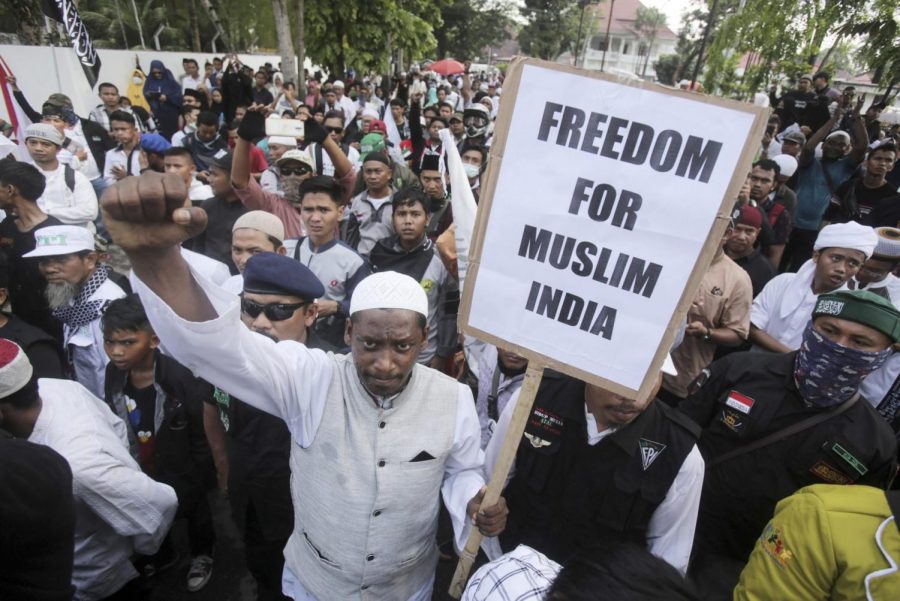
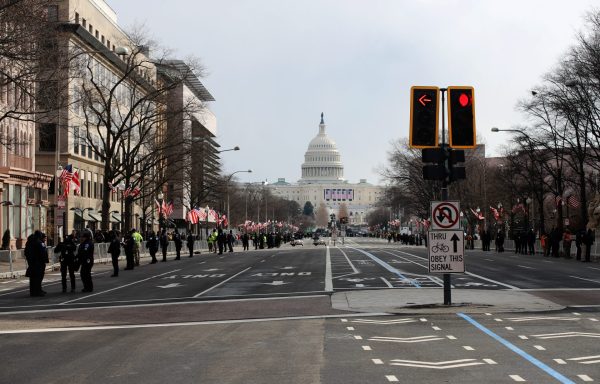
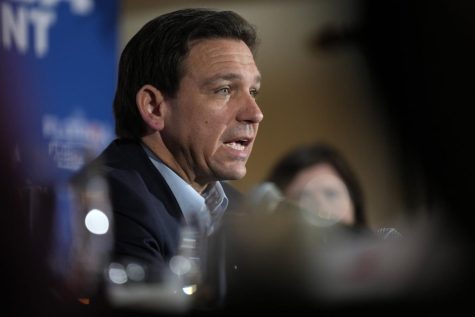
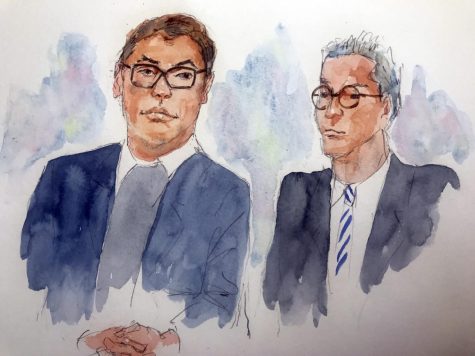
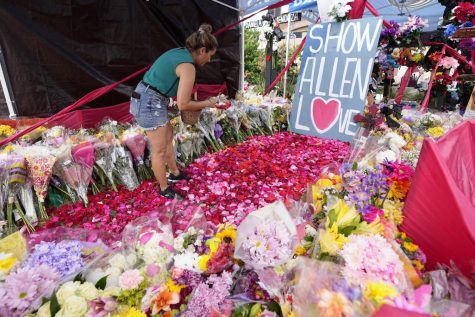
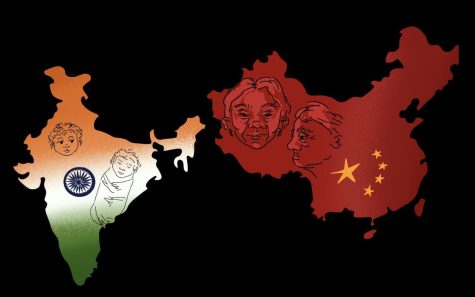
Jyotish / May 18, 2021 at 10:38 am
The above comment by samir sardana is filled with lies and I can sense his hatred towards Hindus and India. By the way the article here is also filled with hatred and people who are reading this , this article is false claim with liberandus viewpoint. We have so many antinational who want to destroy the ancient civilization and pride of India aka Bharat. When the Islamic invaders invaded most part of Asia, they were not able to conquer India.Then comes British,Portugese, Dutch,France etc Invasion . You may all know about Goa Inquistion where Hindus had to face torture and slavery by Jesuit missionaries under Francis Xavier. He made some harsh laws called inqusition laws and many hindus had to flee from Goa and hundreds of temples were destroyed by Jesuit missionaries.Still cathedral of Francis Xavier is in Goa and churches in his name are in different places of India. Many countries which tried to invade us are now our friends. But still many antinationals who doesnt respect the history or civilization or culture of this land tries to destroy the peace in India by making riots . Sadly these riots are made by the Muslimss in India. They just want to destory the peace . If you search back at history it is these people who asked for pakistan and didnt moved when the partition occured. And now they want to launch GauzweHind , where India becomes an islamic country.
Namaste.
If you have any more doubts just mail me deshbhakthindu2020@gmail.com
samir sardana / Apr 24, 2020 at 11:03 am
CAB and NRC for the Indian Muslims
The plan of the Chaiwala for the Indian Muslims.dindooohindoo
Hypothesis
Assuming that the votes cast in the last polls in Hindoosthan,were at 40% of the aggregate Indian Population – it would be safe to assume that 50% of the residual non voters,would have no ID proof or records to prove ID, and there will be alternative claimants to their ID and properties and assets.
Of them 90% will be Muslims,Dalits,SC/ST and just poor and marginal farmers and workers.What are these people expected to do ? There is no way that they will get any ID or prove the forensic trail of their possessions and properties,even within the current generation.It will be impossible to prove that they are Bangladeshis or from Timbuktu.
Step 1
As soon as these people are identified,their assets will be frozen and there will be multiple claimants for their assets and possessions – which will lead to distress sales and 3 rd party warehousing of their properties and assets as well as hawala operations within and outside Hinooosthan (at a huge loss to the owners,just like in the Demo)
Step 2
In addition,touts fronting for the BJP/RSS will offer alt-IDs,safe passage etc. (just like in the Demo drive) and the baboos,patwaris,village polity and pandoos (khaki ke kutte) will have a field day
Step 3
The next step of the Chaiwala,will be to target the Muslims etc.,with voter ids and voting rights and to use the NRC,to disenfranchise them – as a non-citizen cannot have a voting right.
Purpose
The purpose of the Chaiwala is to disenfranchise Muslims and Dalits and Tribes in several North Eastern states,and other states,where the margin of vote winnings,is in a few 100s or 1000s,and there is a large hostile population which is anti-Muslim or Anti-Tribal,in sentiment.Then the Chaiwala can import the Hindoos from SAARC and settle them in those wafer thin constituencies (as swing voters),and especially near the IB (as spies).
Export-Import
The disenfranchised Muslims and Muslims with No ID,will then be exported to UP/Bihar/Telangana etc.,to Muslim dominated areas (on the pretext that their own,will protect them),where the BJP already has an electoral disadvantage – to further polarise the Hindoos,in those states and provoke Anti-Muslim sentiments,to secure/grow and consolidate their vote bank
Electoral Aggregation
In the interim,the other political parties will punt on the Muslims etc.,and thus,will form a coalition against the Chaiwala (to ensure that there is no vote split and the votes are transferred to the coalition).This is what the Chaiwala wants,as that will further polarise the Hindoos and possibly bring to the fore their bestial instincts – which will be,to support the Chaiwala
If there is no Anti-Chaiwala coalition,then the Muslim vote will splinter,as Chaiwala,earnestly desires
The Hindoo Bindoo who believed that they would get 25000 USD per capita,will be easily conned to believe that the Anti-Chaiwala coalition,created riots over CAB and thus,the Muslim reaction on the streets – is precisely why NRC is required,and that the Anti-Chaiwala coalition is anti-hindu and anti-national
False Flag operations
If the instincts do not show the surge,then the Chaiwala will use the NIA/IB and Military Intel to bomb some Hindoo refugee camps and some Muslim clusters – like in Pulwama (which was a difficult forced flag operation).That will be cake walk for the NIA/IB – the khaki ke kutte.
It is certain that there will be spate of bombings in North East and Central and South India to build the euphoria
against the “imagined other” and build the case for the NRC
The Pathetos
A majority of Indian Muslims are Dalit converts.It is easy to conceive a situation wherein some Muslims with no ID Proof will gladly add “Rama” to their names,and accept ID cards with a Lotus synbol,or verses of the Ramayana – to live in India.
The Kiss of death of the Israelis
History records that whoever is used by the Israelis or is conned by the Israelis to kill the enemies of the Israelis – is destroyed forever.
It is the curse on Solomon’s lineage and those which support the lineage
Chaiwala was born to destroy Hindoosthan and has now adopted the Israeli Model.The Jews convinced Cyrus that a verse in the Torah named him as the Messiah.He rebuilt the Temple of Solomon, and his clan,empire and nation were destroyed forever.
The Jews conned Cyrus.Chaiwala is the son of a Ayah Whore.It is the destiny of the chaiwala to doom Hindoosthan.Moral of the Story
The dumb Muslims and Dalits of Hindoosthan have to understand that they need a separate nation.They will get nothing from Hindoosthan.
samir sardana / Apr 24, 2020 at 11:02 am
What is the Genesis of Hate ?
Y Muslims need to see CAB,UCC and NRC Together – like the Christian Trinity (which is Haram in Islam)
A lot of the Hindooo Dindoo Bania/Brahmin TV media try to delink the CAB and NRC,and try to make Muslims believe that CAB is not Anti-Muslim and NRC is far off..dindooohindoo
This is again a strategem of the Fat Pancho Amit Shah and Dishwasher Chaiwala Modi diwmit duopoly.
Phase 1
In Phase 1 – the Bania/Brahmin company did cow lynching,love jehad lynchings,rama temple lynchings – to place the Muslims in the siege mentality syndrome.This is the Israeli Model – who first rape and kill the Palestinians – who look to the UN and the USA/EU – who do not do a thing.This starts the siege mentality when the legal system turns its back on the race,and the said race becomes a pawn in the hands of nations,and international organisations.
Phase 2
In Phase 2 – after making the Muslims physically insecure and helpless,the Bania/Brahmin company, deliver legal blows like the triple talaq bill,rama temple etc.This is also the Israeli Model – wherein the Jews have conned the USA to shift the embassy to Jerusalem,and reckon it as the capital of Israel.
Phase 3
In Phase 3 – which has now commenced you have the trinity of CAB/Uniform Civil Code(UCC) and NRC
The target of the NRC and the UCC are the Muslims,per se.In CAB,it is an assymetric target – by specifying 3 Islamic nations – and their Hindooo,”so called oppressed minority”.
The expectation is that Muslims become innured and oblivious of this destruction – just like the Dalits did for 5000 years.
Phase 4
In Phase 4 – like the Israelis split the Fatah/PLO etc., the Bania/Brahmin scum will give an OPTION to the minority sects of Muslims,to state in their identity documents their sects.This is the phase of casteing and classing the Muslims – who will ultimately declare,that they are “Hindoo Muslims”
Minority sects of the Shia,Bohris,Ahmadiyas etc are declared as Non-Muslims in several Islamic nations.West Asian History also records that the Mongol invasions were assisted by these sects.Hence,these sects will in all
probability toe the line of the Brahmin/Bania vermin – and start offering ritualistic tribute to Rama and the mad team of ape gods
Phase 5
In Phase 5 will come the quarantining and class-ing of Indian Muslims and Dalits in special zones and geographies with separate tranist id cards and restrictions on voting and mobility.
Class is a natural corollary of the caste sanction in the Gita.The aim is to 1st use class to split the Muslim sects and then target the Hindoo castes – namely the Dalits.The Muslims are targetted with the pretext of National Sacurity and the Dalits will be targetted on the grounds of economic security – and then split based on Valmikis etc.
The Problem of the Indian Muslims
What is The Problem of the Indian Muslims ? The Gita is the only scripture which authorises caste discrimination before a man is born,and which lasts beyond the death of the person.
It is only a naturally corollary and evolution that the Brahmin vermin will apply the same maxim to the Indian Muslims through the contorted and contrived convolutions of the NRC – under the garb of National Security – ostensibly to satisfy Article 14 of the Constitution.In reality the Brahmin/Bania vermin does not care for the Constitution – which is the antithesis of the Vedas and the Gita and the Ramayana.
The Hindoos did the same thing to the Sikhs.Nanak did not use the word “Khalsa”.It was the Hindoo who conned the Sikhs,to become a race of mercenaries – and a sort of a mad suicide cult – which started worshipping vulgar and naked Hindoo Gods and Goddesses.The Sikh Gurus,Ranjit Singh,Khalsa Empire and Sikhism,were all destroyed due to the spiritual corruption by the Hindoos.Whoever supported the Hindoos was destroyed – that is the record of history (From the Sakas to the Huns/Mongols and the Mughals) and also recorded by Beruni.
Now it is the turn of the Indian Muslims – it is they who voted for the BJP – just like Solomon who broke the Oral law and specific injunctions by Allah.Now it their turn to face doom.If a follower of Isaac or Ishmael cannot recognise Evil and explicitly supports Iblis or Evil – then it is clear than the man has been forsaken by Allah – and, in the opinion of this author,deserves doom.
An “Indian” Muslim is not a Muslim who follows the Oral Law as re-revealed to the Prophet.To live as an “Indian” Muslim is a spiritual curse – which would definitely,not lead to paradise.
The Hindoos of Pakistan and Afghanistan
Not even 0.1% of the Pakistani and Afghan Hindoos will seek refuge in Hindoosthan.And those that are in Hindoosthan will realise very soon that they have no DNA link with Indians.
They will cohabit and marry with their own and eventually shift to USA/EU – just like the Iraqi Shias in India,who only marry among their own.
The Hindoos of Bangladesh
Bangladesh has Gas.North East India has nothing.In the next 10 years,Indians will become economic refugees in Bangladesh – and many parts of North East India,will voluntarily secede from the Indian Union.In addition,like in Lanka,when a new political entity in Dhaka,kicks out the BJP and the Indian State and the PRC and PLA come in,the entire North East will be supplied from Bangladesh,at 20-35% cheaper items – for all purchases made by the North East Indians.They will be glad to secede from the Indian Union and form a trading block – with the PRC dam-ing the Brahmaputra,and wheeling the power right across India,to Myanmar and Dhaka.
The Future of North East India lies in Myanmar,PRC and Bangladesh – and NOT with Eastern India or Central India
Hindoosthan is doomed.
Solution
The Solution is only the partition of Hindoosthan.Partition leads to evolution of the human race – when there is no 1 race,in a nation.PRC is one race – the Mongol and the Mongoloid.India has a million mongrelised races plagued by 2000 years of incestuous pullulation – and that is a sad historical and scientific fact and truth
The suboptimal and retarded evolution of the Indian Mongrel races,is what is leading to the disaster of Hindoosthan,as it exists today.dindooohindoo
Agha Parvez Masih / Apr 1, 2020 at 10:42 pm
It is painful to see loss of humanity. I am hopeful from educated Indian youths for eliminating disrimination on the basis of religon, caste , language n region. Presently India is facing lockdown n all indians are serving poors n needy people. This gives me hope for a new begining. Jai Hind
Akshay Sood / Mar 9, 2020 at 12:44 am
Hindu First is not an agenda of the BJP or PM Modi. In fact the published agenda is Sabka Sath (or all together). There is no priority given to Hindus in any government programs.
In recent Delhi riots, the viciousness of violence on both sides was unprecedented. The viciousness of Muslim rioters against the police in the first few hours were horrifying, exemplified by the stabbing of an intelligence officer 400 times and gouging the eyes out. This was jehadi scale violence and unfortunately supported by a Muslim city councilor. Both communities will have to build bridges to avoid this violence from recurring.